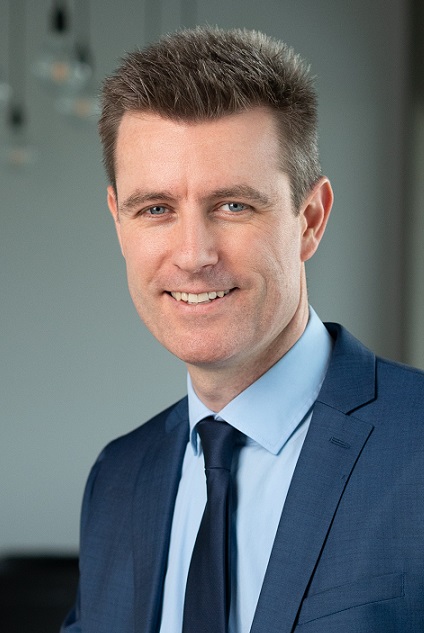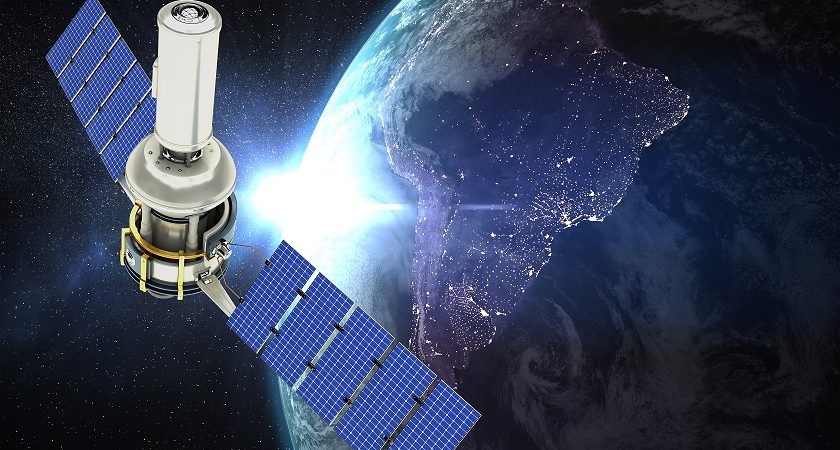Frederik Simoens, CTO, ST Engineering iDirect, tells us that Latin America is under pressure to offer basic broadband and telecommunications services to its citizens. According to him, the satellite is essential to transform the connectivity of millions of people throughout the region.

The Latin American region is experiencing a surge in demand for Universal Service Obligations (USOs), where governments of different countries must provide basic broadband and telephony services to their citizens. This need was brought into sharp focus during the pandemic lockdowns that took hold across the globe.
The realization that connectivity is all-important for the continuation of everyday life in every nation has truly hit home. Today, providers across Latin America are under pressure to offer future-proof services and to scale their networks cost-effectively, all whilst remaining profitable and at the cutting edge of communications technology.
For those in remote communities, the isolation of the lockdowns hit particularly hard, and connectivity was, in many instances, the only means of contact with the outside world. As a result, digital inclusion has become a priority for Latin American nations. It’s clear that, as a technology that leaves no one behind, satellite is key to transforming connectivity for millions of people across the region.
For decades, ST Engineering iDirect has actively worked alongside network operators and service providers to answer this call for digital inclusion. Across a continent where 32% of people remain unconnected, this is an ongoing challenge.
Satellites play a pivotal role
Unconstrained by location, satellite is a transformative technology that requires no prior infrastructure to establish connectivity. A clear line of sight between the modem and satellite is all that is required. Fast to establish and easy to operate, it’s a solution to a basic need that is often taken for granted. It connects people and communities, enabling them to fulfill basic needs such as attending school, requesting medical help, ordering supplies, receiving news updates and connecting with loved ones.
Through the deployment of multiservice satellite platforms, a wide variety of services can easily be deployed from community Wi-Fi to cellular backhaul services, fulfilling the connectivity needs of entire communities.
Connecting Bolivia
The Bolivian Space Agency (ABE) is leveraging ST Engineering iDirect’s technology to connect people and communities in Bolivia. Originally installed in 2019, this enabled the Agency to extend access to residential broadband delivered by the national Tupac Katari 1 Ka-band satellite.
Recently, ABE decided to upgrade the system and to take advantage of ST Engineering iDirect’s Mx-DMA MRC powerful return waveform technology, thus enabling the Agency to increase its cellular backhaul service by at least 500 sites, crucial in the delivery of data to people’s phones.
The upgrade has also enabled ABE to meet the government requirement to connect unserved areas of Bolivia at an affordable price.
From Peru to Mexico
For the seven million people that live in remote regions of Peru, access to connectivity has been made possible by the Te Conectamos Peru project, a partnership between Andesat, Intelsat, ZTE and ST Engineering iDirect.
Originally set in motion in 2015, the project identified an opportunity to extend MNOs’ reach to remote regions of Peru to ultimately benefit a universe of 60,000 towns and villages and a total of 3 million people.
Andesat already utilized ST Engineering iDirect’s Satcom platform which enabled it to swiftly move into a new market, offering Wi-Fi and 4G services to remote villages and allowing residents to access voice, data, and video via a computer or mobile devices.
Up until the point when Andesat made its move into the rural market, increased access to connectivity in remote areas of Peru was deemed too risky for any MNO or communications service provider to tackle alone. The pioneering Andesat project is making cost-effective technology available to MNOs that only pay for the traffic their end-users consume.
The partnership has enabled Andesat to deliver a reliable, satellite-based solution that brings together high-performance Satcom equipment, along with solid satellite capacity and an efficient small-site cellular backhaul device.
In Mexico, Axess Networks is also utilizing the Mx-DMA MRC return technology to open up 4G access for remote users across the country. Services can now reach 110Mbps/30Mbps throughput per site, enabling seamless sharing of satellite capacity and the highest quality connectivity experience for rural customers.
4G is hugely important as communities in rural areas are often difficult to connect, but this mobile connectivity is a necessity, as it allows people and businesses to access critical services such as mobile banking and to stay in touch with friends and family.
Vital education resources for Brazil
In 2015, roughly 97 million people in Brazil did not have Internet access, and only one-third of children made it to the sixth grade. This led the Brazilian Government to implement a plan to make education more accessible, especially to those children living in remote locations. The Amazonas State Secretary of Education commissioned the development of a distance-learning program spanning Brazil and connecting 45,000 children from remote areas to teachers located in Manaus, the capital city of Amazonas.
To achieve this, Tiradentes de Telecomunicações partnered with ST Engineering iDirect, to upgrade all its existing VSATs to the latest most efficient, and powerful Satcom platform – in a matter of just 60 days, ensuring that every site supported IPTV (the application used for long-distance learning).
This system supported the peak transmission of seven simultaneous and interactive classes, which has now evolved into Google classroom software. The project has been a major success, and it is estimated that 200,000 students depend on this network to receive basic education at all levels. The Satcom solution has resulted in spectrum savings of 35-40% across the network, allowing more traffic to be accommodated, as demand is high. In just five years, the network has become the largest in Brazil and shows no signs of slowing down.
Communities involved in this project did not only benefit from the educational aspect of the platform. They used this network for other services. When teaching finished, Internet browsing was available for general public use. This included a chat tool to communicate with people from nearby communities. The network provided by satellite became a lifeline for those in remote communities, making the work of ST Engineering iDirect even more important.
Dedication to a thriving region
For decades, ST Engineering iDirect has been working with service providers throughout the region that have deployed our Satcom platforms to bring families, friends, businesses, organizations and institutions together, reducing the feeling of isolation that the lack of connectivity brings to those living and working in remote areas of Latin America.
Satellite communications are more accessible than ever and represent a reliable, cost-effective tool that allows easy connectivity and enables service providers to gain from the lower total cost of ownership (TCO) and return on investment (RoI).
Through the initiatives we have talked about in this article and many more, we will continue to shape the future of communications across the region. ST Engineering iDirect is enabling its customers to empower regional MNOs and providers to offer cost-effective services and business models that allow more people to enjoy the power of communications.
About the author
Frederik Simoens is the Chief Technology Officer at ST Engineering iDirect, where he is responsible for the oversight of all technology decisions and serves to drive the strategic direction for product development, technology roadmap and technology alliances.
Previously, Simoens worked at Newtec where he worked on physical layer technologies, launched the DVB-S2X standard within Newtec’s platform, and in 2015, became VP of product management, which led to a promotion to CTO.
His key areas of expertise include physical layer technologies, satellite communications and digital modems. He is also a guest lecturer at the University of Ghent and is the author of 40 plus publications.
Simoens obtained a Master’s degree in electrical engineering and a Ph.D. degree in digital communications, both from the University of Ghent. He also holds an MBA degree from the Vlerick Business School.
Click below to share this article

